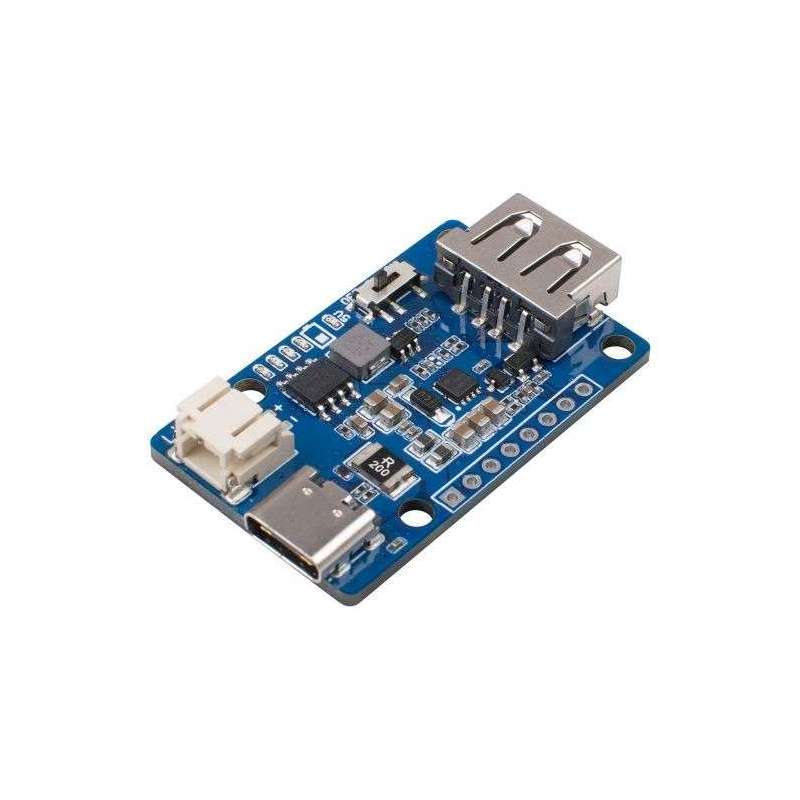






RLX COMPONENTS s.r.o. , Electronic Components Distributor.
RLX COMPONENTS s.r.o. , Electronic Components Distributor.
Lipo Rider Plus Charger/Booster - 5V/2.4A USB Type C (SE-106990290)
The Lipo Rider Plus from Seeed is not only a Fast Charger but also a Strong PowerBoost, supports up to 5V/2A charging current, boost output integration, output up to 5V/2.4A, can also output 3.3V /250mA.
The Lipo Rider Plus from Seeed is not only a Fast Charger but also a Strong PowerBoost, supports up to 5V/2A charging current, boost output integration, output up to 5V/2.4A, can also output 3.3V /250mA. The 3.3V output is normally on, and the 5V output supports IO control or manual switch, which means you can use 3.3V to supply power for a microcontroller and use the I/O of this microcontroller to control the 5V output, totally programmable. Simply put, the Lipo Rider Plus can charge the Lipo battery much faster, at the same time it can provide strong power for the slave device. Oops, forgot to introduce the difference between the Lipo rider and the traditional Lipo charger.
As we know, the traditional Lipo Charger can charge the lithium battery. Well, usually they can only charge. But what can a Lipo Rider do?
Charging the lithium battery

Of course, Lipo Rider Plus can charge the Lipo battery, and it is very fast, 5V/2A, 10W charging power, what a flying experience.
Use the battery to power the device. Not only a charger but also a power supply and a booster. With the help of Lipo Rider Plus, you can input a 3.7V lipo battery, and output up to 5V/2.4A via the USB Type-A port. With the on-board switch, you can control the ON/OFF of USB port easily. Meanwhile, we provide the full function pin header, which can output 3.3V/250mA as well.
You may find that we've already released the Lipo Rider V1.3 and Lipo Rider Pro, so, what's the difference between Seeed Lipo Rider? In short, both LiPo Rider Pro and Lipo Rider v1.3 have two JST2.0 Port, which allows you to use a solar panel to charge a lipo battery. However, the Lipo Rider Plus only has one JST2.0 port. Hence, it can not use a solar panel as the power source. The good news is that Lipo Rider Plus has become more compact, it is almost half the size of LiPo Rider Pro and Lipo Rider v1.3, you can easily mount it in any project. More importantly, its performance is much stronger than its two predecessors. All in all, if you need to work with solar panels, then LiPo Rider Pro and Lipo Rider v1.3 are right for you; if you want to experience fast charging, then Lipo Rider Plus will be your best choice.
